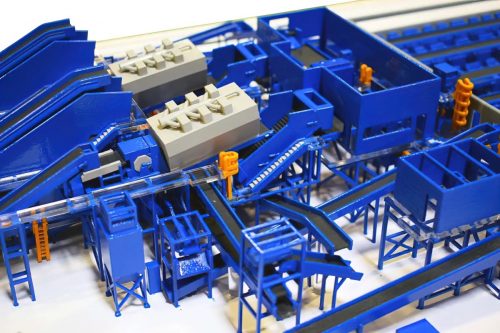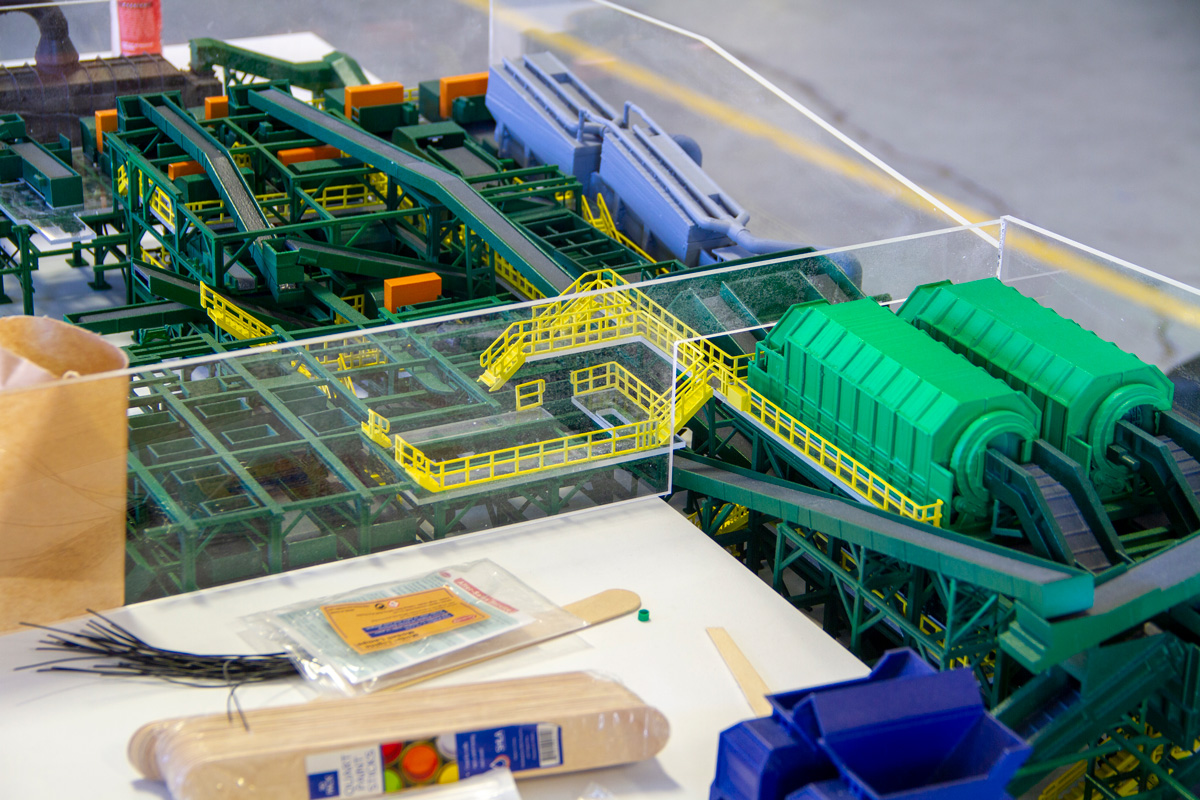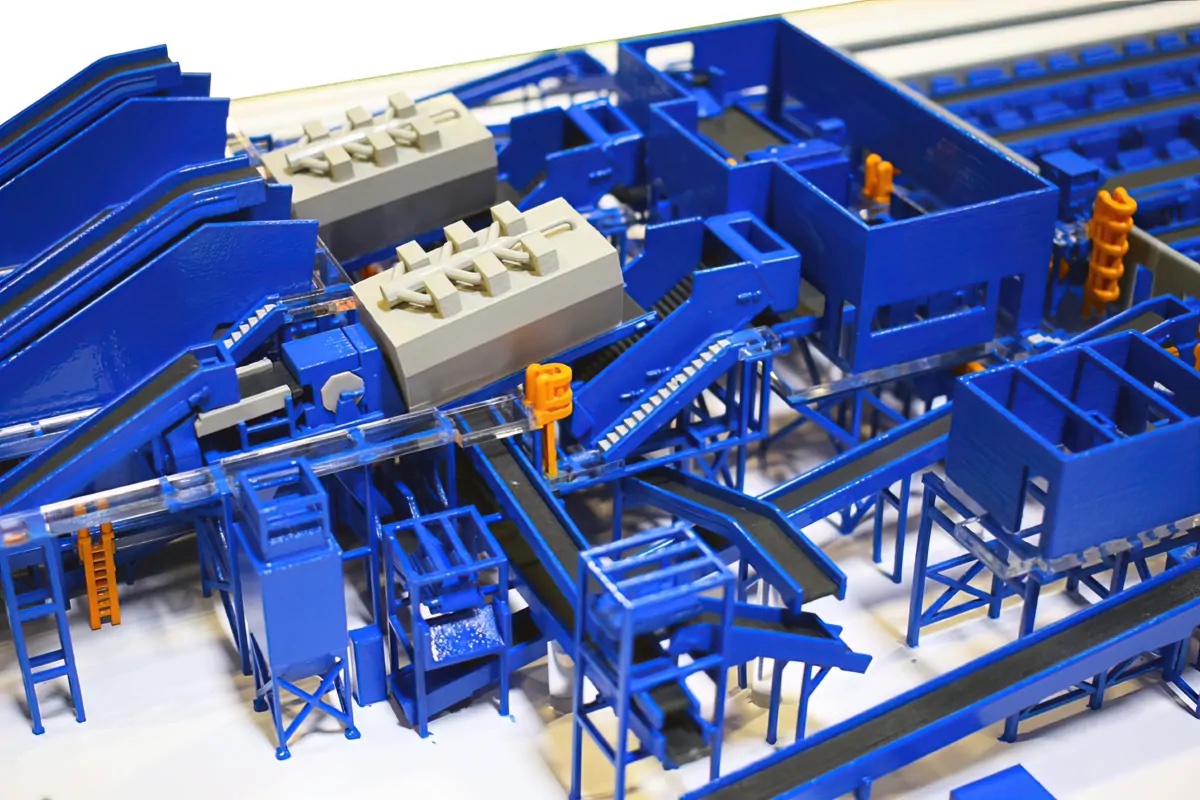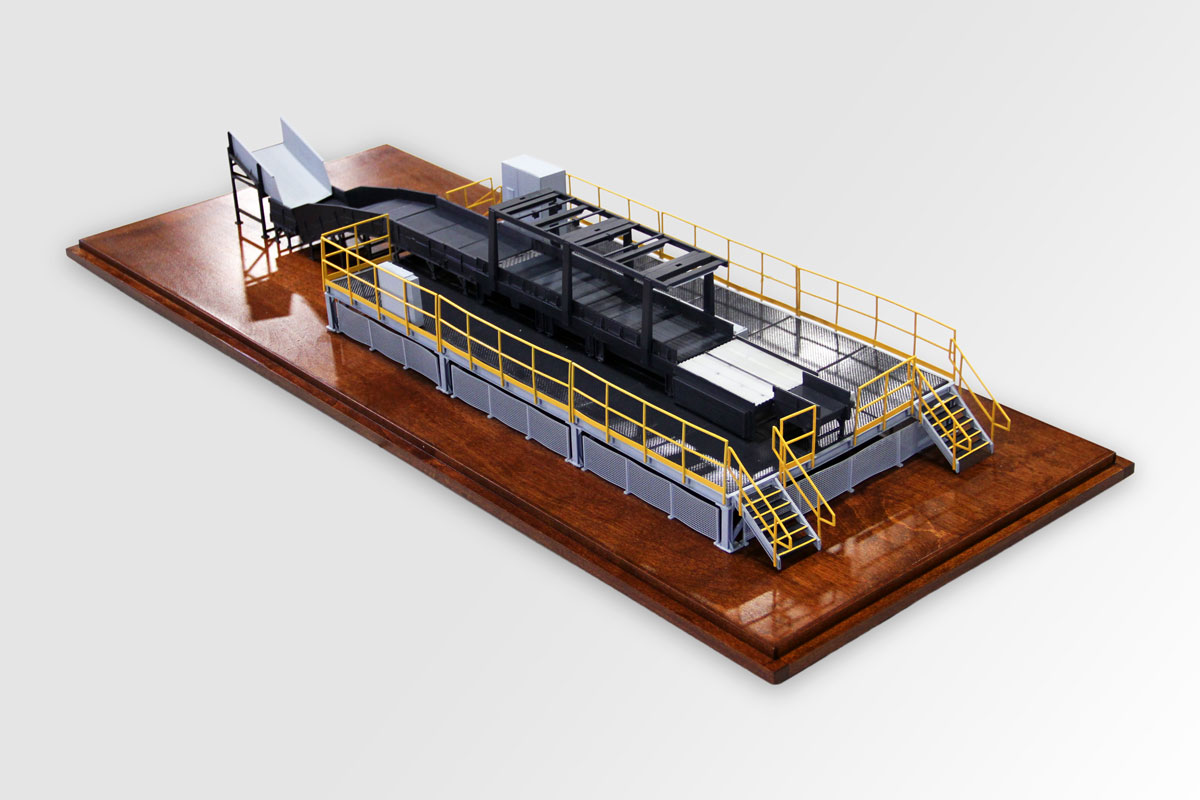Factory Floor Scale Models
Factory Floor Scale Models
We Build Custom Scaled 3D Factory Floor Models
Did you know we make
custom
3D factory floor models?

Exploring the World of Factory Floor Scale Models
Factory floor scale models offer a unique perspective into the inner workings of manufacturing facilities. In this comprehensive exploration, we dive into the captivating world of factory floor scale models, examining their diverse applications, intricate designs, and the fascinating process of fabrication that brings them to life.
Understanding Factory Floor Scale Models: An Overview
At the heart of factory floor scale models lies the intention to replicate manufacturing environments in a scaled-down format. These models serve as valuable tools for visualizing production processes, optimizing workflow layouts, and training personnel. From automotive plants to electronics assembly lines, factory floor scale models provide insights into efficiency, productivity, and resource utilization.

Applications of Factory Floor Scale Models
The applications of factory floor scale models are multifaceted, spanning across industries such as automotive, electronics, aerospace, and consumer goods. They are used for various purposes, including process optimization, facility planning, quality control, and workforce training. By simulating real-world scenarios, these models enable manufacturers to identify inefficiencies, streamline operations, and enhance overall performance.
Visualizing Production Processes: A Closer Look
Factory floor scale models offer a detailed representation of production processes, from raw material intake to finished product assembly. They depict the layout of machinery, conveyors, workstations, and storage areas, providing a comprehensive view of the manufacturing flow. These models help stakeholders visualize material flow, identify potential bottlenecks, and implement improvements to increase throughput and reduce lead times.
Optimizing Workflow Layouts: Designing for Efficiency
One of the key benefits of factory floor scale models is their ability to facilitate layout optimization. Manufacturers can experiment with different configurations, rearranging equipment and workstations to minimize material handling, reduce idle time, and improve ergonomics. By analyzing virtual layouts through scale models, companies can create more efficient and ergonomic work environments, ultimately enhancing productivity and employee satisfaction.
Training and Simulation: Preparing for Success
Factory floor scale models serve as invaluable training tools for personnel at all levels of the organization. They allow operators to familiarize themselves with equipment operation, assembly sequences, and safety procedures in a risk-free environment. Additionally, scale models enable simulation of production scenarios, helping teams prepare for unexpected events, downtime scenarios, and capacity constraints.

Fabrication Process of Factory Floor Scale Models
While factory floor scale models serve diverse purposes in manufacturing, their fabrication process requires meticulous planning, precision engineering, and attention to detail to accurately represent production environments.
Design and Planning: Translating Concepts into Reality
The fabrication journey begins with conceptualizing the factory floor scale model’s design and layout. Engineers and designers collaborate to translate conceptual ideas into detailed blueprints and schematics using computer-aided design (CAD) software. They consider factors such as scale, accuracy, functionality, and aesthetics to create a realistic representation of the factory floor.
Material Selection and Procurement: Choosing the Right Components
Once the design is finalized, attention turns to material selection—a critical aspect of fabrication that impacts the model’s durability, appearance, and functionality. High-quality materials such as plastic, metal, wood, and resin are chosen based on their suitability for different components and the desired level of detail.
Construction and Assembly: Building with Precision
Skilled technicians meticulously construct and assemble the factory floor scale model, following the detailed plans and specifications. They cut, shape, and assemble components such as machinery, conveyors, workstations, and storage racks with precision and accuracy. Each component is carefully aligned and secured to ensure structural integrity and stability.
Detailing and Finishing: Adding Realism and Authenticity
As the model takes shape, artisans add detailing and finishing touches to enhance realism and authenticity. They paint surfaces, apply decals, and add signage to replicate the appearance of the actual factory floor. Lighting and sound effects may also be incorporated to simulate operating conditions and create a more immersive experience.
Quality Control and Testing: Ensuring Accuracy and Functionality
Before completion, the factory floor scale model undergoes rigorous quality control and testing procedures to ensure accuracy and functionality. Technicians inspect each component for defects, verify dimensions and alignments, and test moving parts for smooth operation. Any discrepancies or issues are addressed and resolved to meet the desired standards of quality and performance.

Conclusion: Empowering Manufacturing Excellence
In conclusion, factory floor scale models play a vital role in empowering manufacturing excellence by providing insights, facilitating optimization, and enhancing training within industrial environments. From visualizing production processes to simulating scenarios and training personnel, these models enable manufacturers to achieve higher levels of efficiency, productivity, and quality in their operations. As technology continues to advance, factory floor scale models will remain indispensable tools for innovation and improvement in manufacturing.
Contact us today to learn more about our 3D services and how we can help you achieve your goals.